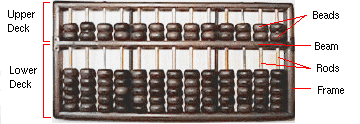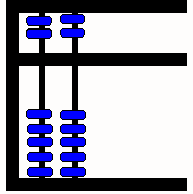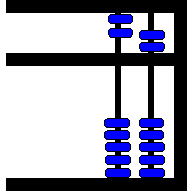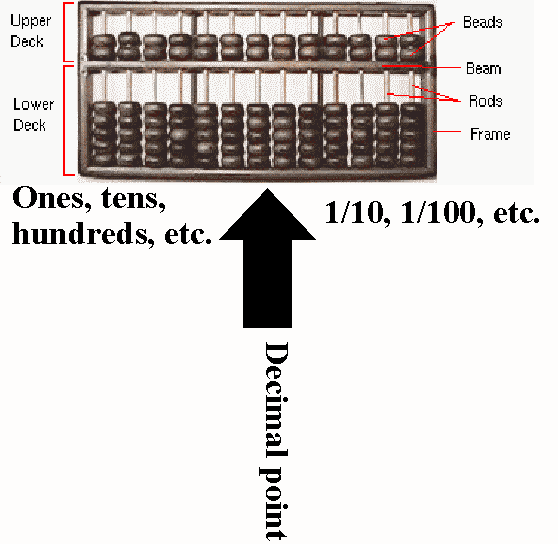

People still in use the abacus today. One calculates on the abacus by manipulating the beads with the fingers of one hand. Beads in the upper deck have a value of five; each bead in the lower deck has a value of one. When one moves a bead towards the beam that separates the two decks, it adds the corresponding amount to the total. When one moves a bead away from the beam that separates the two decks, it removes the corresponding amount from the total. Starting at the right-most column the columns have the values, ones, tens, hundreds etc.. One transfers from a column in the lower deck to it's the upper deck counterpart column after 5 beads are counted in the lower deck.

When one counts both beads in a given column in the upper deck (i.e., 10 of whatever, ones, tens, etc.) one again transfers the amount by moving the quantity to the lower deck on the next column.

Decimal calculations are performed by designating a space between 2 columns as the decimal-point. All the rows to the right of the designated space represent fractions (1/10, 1/100, etc.). All the rows to the left of the designated space represent whole number digits starting with ones.

|
|
| The Abacus
|
| History
of Calulating: abacus
|
| The Extremely
Condensed History of Computing
|